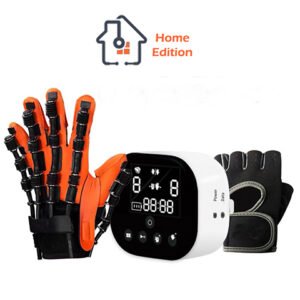Hand Rehabilitation for Dislocations
Hand dislocations occur when one of the eight carpal bones (bones located at the base of the hand) falls out of the joint to cause a hand dislocation. The capitate (largest bone in the hand) or lunate bones are the bones that most frequently dislocate.
Hand dislocations typically occur when :
- Direct, intense force is applied to the wrist and the hand is bent backwards.
- High impact sports such as basketball and football are common causes of hand, wrist or elbow dislocations – football and basketball players can dislocate finger joints when striking the ball, the ground or another player.
- A hard blow to the joint, for example in a car accident, could cause a hand, wrist or elbow dislocation.
As for the symptoms of this issue, they might include the following :
- Visible deformities in the hand, wrist or elbow after trauma
- Inability to move your hand, wrist or elbow
- Severe pain in the affected area
- Swelling in the hands, wrists or elbow
- Misshaped appearance of the hand, wrist or elbow
- Numbness
Wrist dislocations typically require surgery by a hand or wrist orthopaedic surgeon. However, for full and quick treatment, surgery alone is never enough. Physical therapy activities are highly needed to reignite the hand’s normal functioning. For this crucial reason, pursuing hand rehabilitation at home is a must.
Physical treatment is often done in hospitals or clinics, but owing to the Robotic Rehabilitation Glove’s cutting-edge technology, it can now be done at home.
The robotic rehabilitation gloves act in both flexion and extension to mobilize finger joints. Even if the patient has no active residual movement, passive mobilization can be used in the early stages of treatment. The program allows for a wide range of therapy customization options.
To explain in more detail, the SIFREHAB-1.0 Portable Rehabilitation Robotic Gloves would increase force in the direction in which the user tries to move (open or close hand).
The glove can also produce resistance in the opposite direction, which can aid with movement stabilization and muscle tone training. The design could be used for a variety of purposes but it definitely suits those patients who suffer from hand dislocations.
In short, SIFREHAB-1.0 and SIFREHAB-1.1 are low-cost, safe, intensive, and task-oriented home therapy programs that can assist increase efficacy by including the recovery of daily-living-activity functions as well as a home environment adjustment. Functional and psychological performance, as well as independence, benefit from the opportunity to do rehabilitation at home.
To summarize, a person who suffers from a hand dislocation should, by no means, follow an appropriate treatment plan. With the use of rehabilitative robotic gloves, he may be able to improve his symptoms over time and modify his lifestyle for the better.
Reference: Hand, Wrist or Elbow Dislocations


